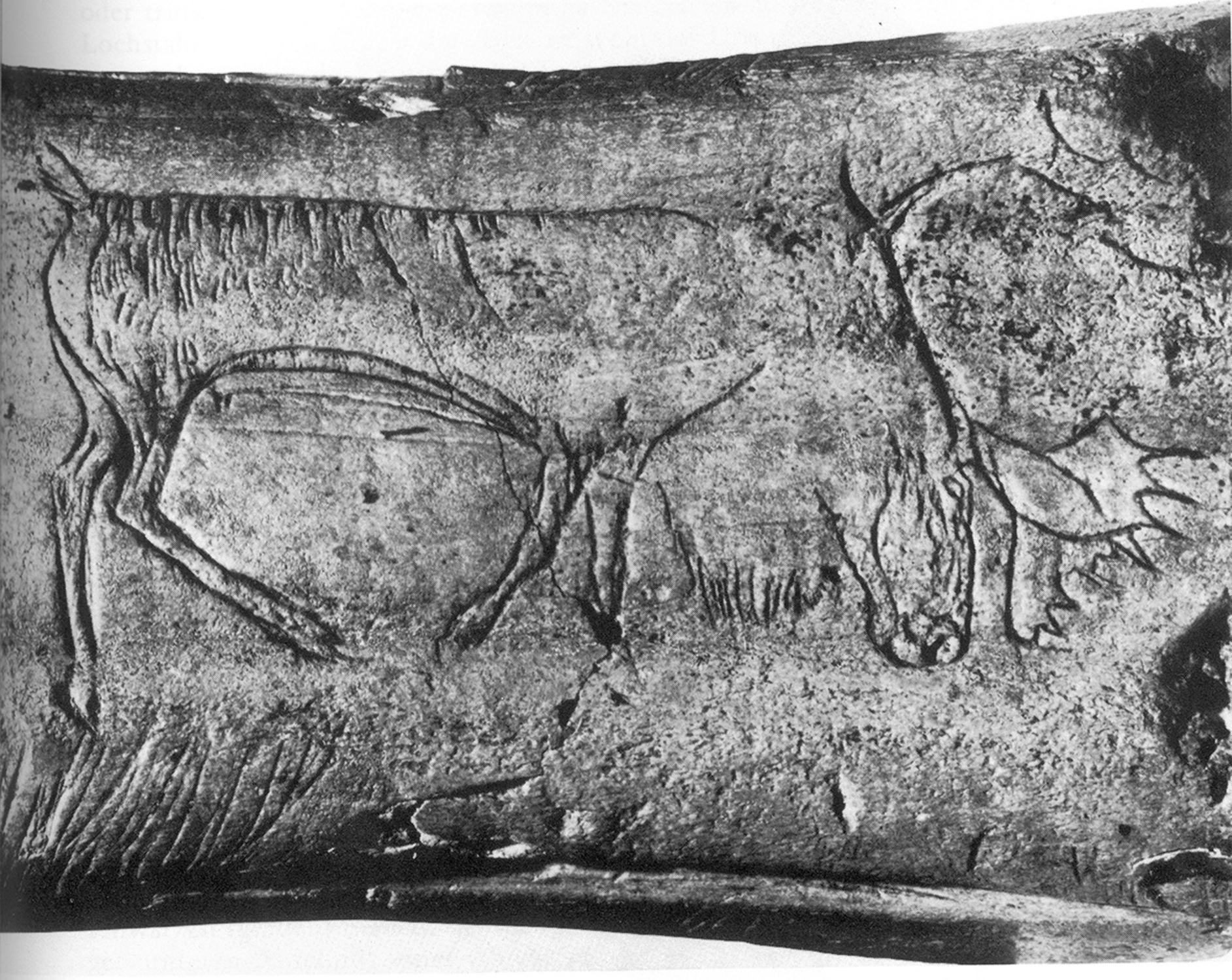
- Home
- More insights into the Magdalenian way of life
- The Magdalenian in Switzerland
- Regularly changing location
Populations whose economy is based entirely on hunting must regularly change location. Therefore, during the Magdalenian, camps were only set up for short periods, often in the same location as big game was hunted, the game being too heavy to be transported long distances.
Regular journeys to hunt large herbivores
Following a fruitful hunt, during which several horses or reindeer had been killed, camp was set up nearby and the animals were butchered. The group’s stay at this location would last only until the big game had been consumed and the hunting of small game was no longer fruitful.
The route that a group travelled over the year was largely determined by the location of sites suitable for the hunting of horses or reindeer. The Magdalenians returned many times to these strategic points, probably quite rare in the very open landscapes of the Swiss plateau, leading to the formation of vast archaeological deposits, such as those at Monruz and Champréveyres beside the Neuchâtel lake, or that at Moosbühl, near the smaller lake of Moossee, a few kilometres north of Bern.
Moving but not migrating
Diverse indicators of the seasons show that the Magdalenians travelled in low altitude areas all year round and that human populations did not undertake large-scale seasonal migrations. Since it was impossible to store large reserves of meat, it is probable that hunting was an almost daily activity, and that there was no significant difference between the extent of travel in winter and summer.



